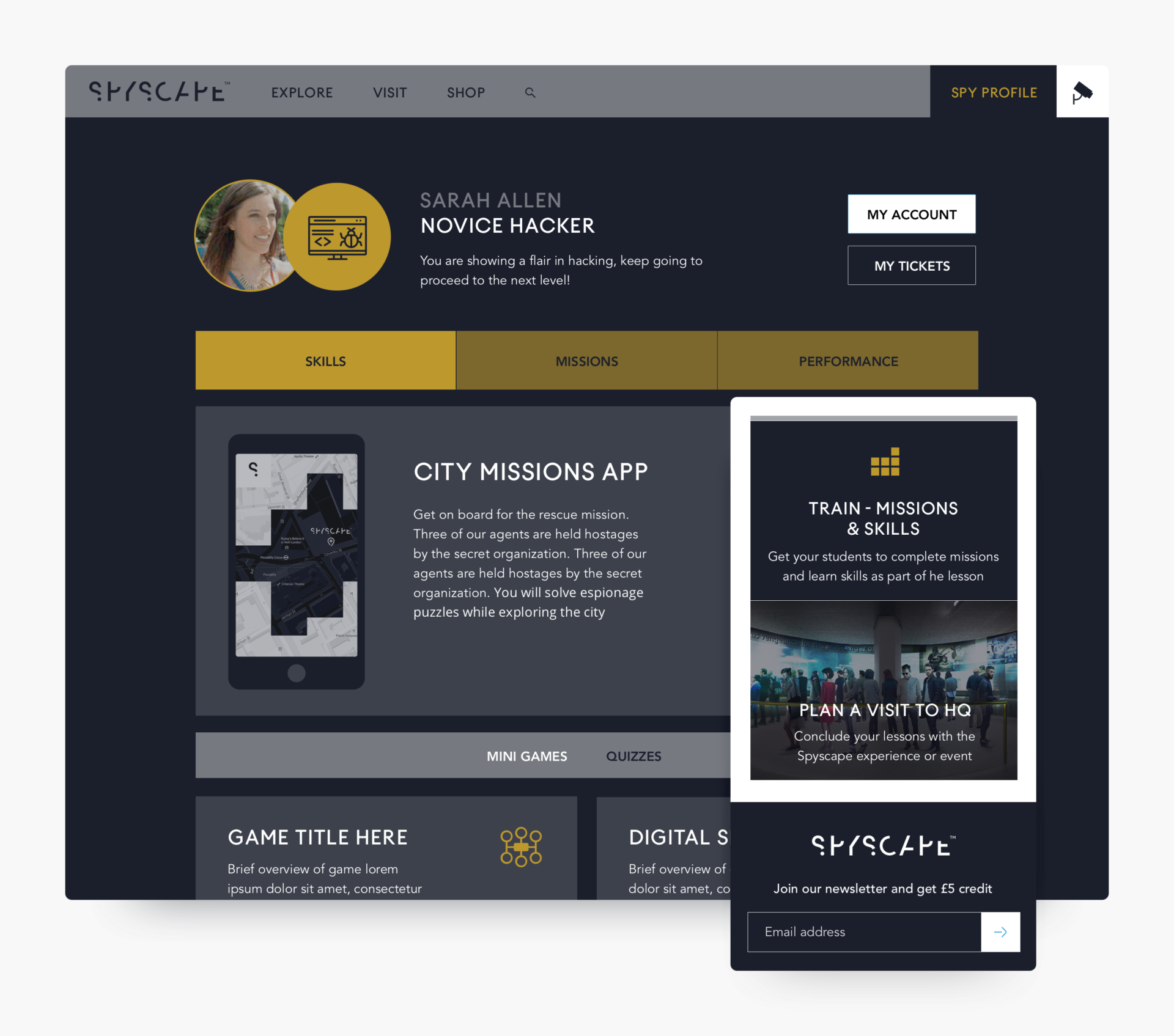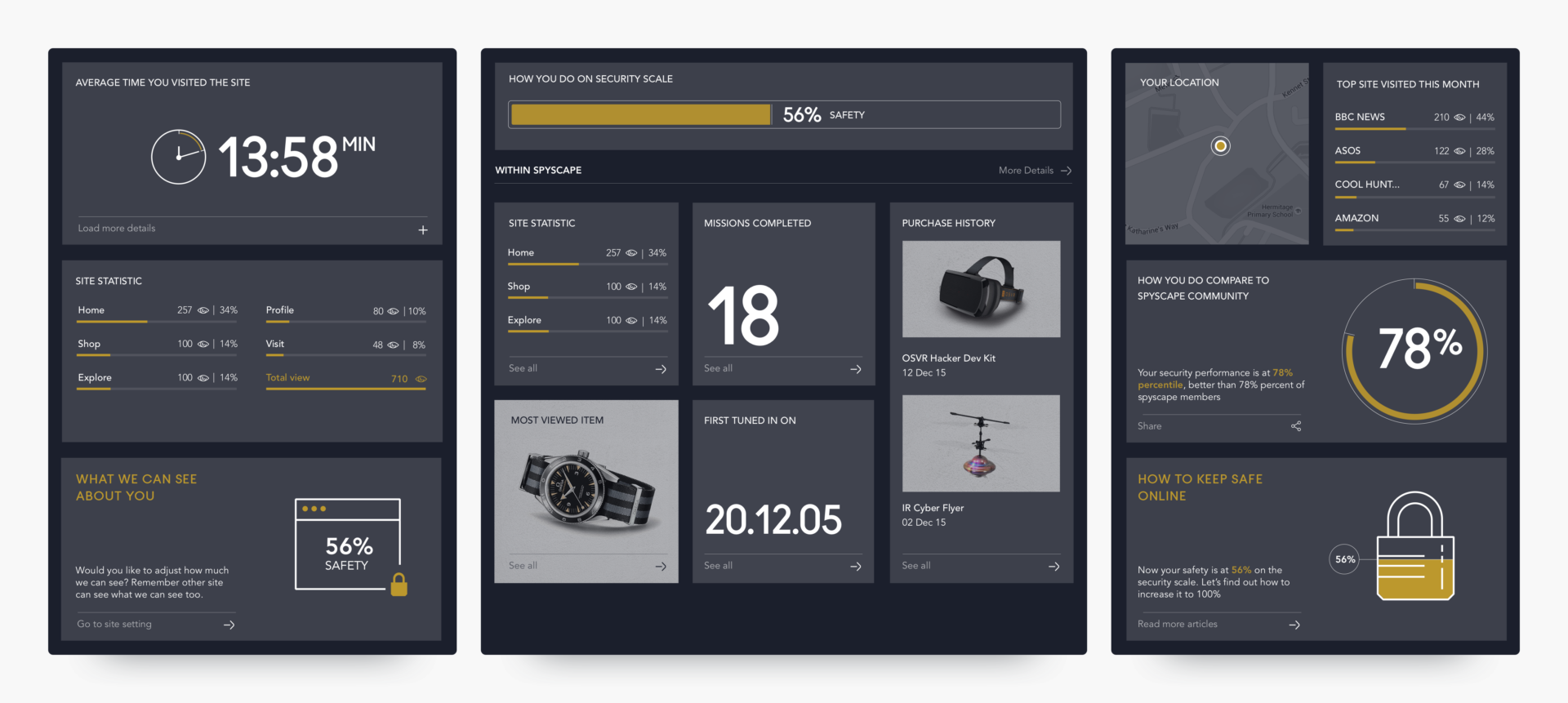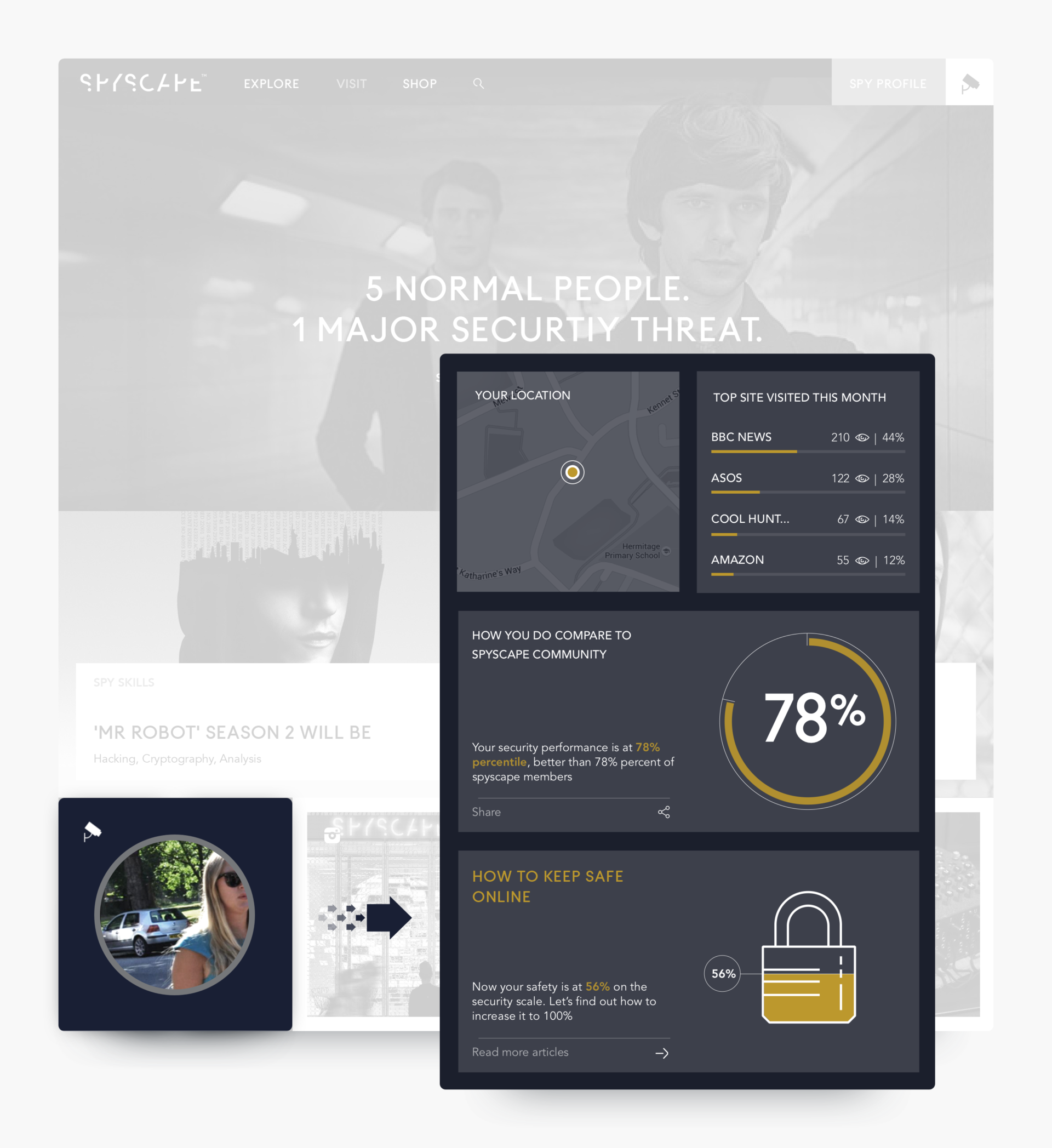Spyscape
A matter of privacy and security
Spyscape — a high-tech museum, came to us with the ambition of building a digital start point for their brand universe by creating the ultimate source for all things espionage.
To achieve that, we needed to look at Spyscape beyond the walls of the museum and create enough intrigue to engage people in understanding the world of privacy and online security.
The digital experience also had to complement and augment the physical offering by creating anticipation as well as enabling ticket purchases, group bookings and profile building.

There were three objectives that we needed to fulfil:
- Establish Spyscape as a respected authority.
- Stir some debate around the balance of privacy and security.
- Extend the physical with the digital experience.
Creating uniqueness
With Spyscape.com, we wanted to create an experience offering something beyond a digital destination for quality information — To do that, we put an espionage angle on how content was delivered and consumed.
Secret areas of the site, easter egg interactions, reactive data playback, and non-linear journeys provided us with the right mechanics to create rewarding moments of surprise and delight.
Below we illustrate some of the key experience concepts that we designed for Spyscape.com.

Spy profile builder
Users were enabled to step into the world of espionage by progressively creating their own Spy Profile based on their interactions around the site.
By the manner users would consume content, they would level up and get casted into different spy archetypes. That information would then be used to personalise digital interactive experiences during their museum visit.

Spyscape surveillance
Part of raising awareness on privacy and online security, Spyscape Surveillance was a concept aimed at exposing the user’s data footprint and making them aware of the information they are giving away just by virtue of using standard digital services and social media.

The concept of Spyscape Surveillance was implented by giving the website two opposing modes: What you know about Spyscape and what Spyscape knows about you.
By compiling data and playing back detailed user information available in the public domain, the purpose was to provoke and create enough unrest so that users started taking control and ownership of their digital data footprint.

Experience portholes
All good spy stories include fast cars, expensive suits, plot twists and secret doors and passages.
Again, these moments aimed to put users into a state of raised alertness and prompt them into interrogating how data ended up in a place they haven’t interacted with before.
In order to capture the espionage atmosphere of the unexpected, users would sporadically be presented with snapshots of their digital selves throughout the experience, mimicking the effect of leaked information in a spy story.

Outcome
Spyscape repositioned the intriguing world of espionage, and repackaged it as a compelling piece of entertainment and theatre. The spy of the modern world exists on two fronts, both physical and digital. Through the combined lens of entertainment and education, Spyscape have been able to show people a hidden world existing in plain sight.
Initially limited by the physical locations, they embraced the power and reach of digital to enchant a wider audience. Else helped Spyscape to reimagine a digital experience beyond the confines of the museum that would build anticipation before the visit and could live long after.
The museum has now launched in New York and the website has been further developed by the Spyscape internal design team, based on the vision ELSE created.
